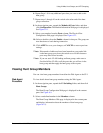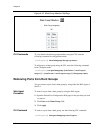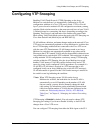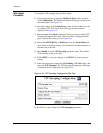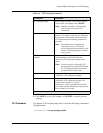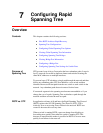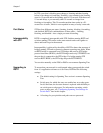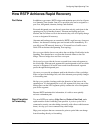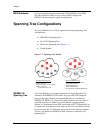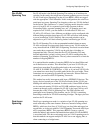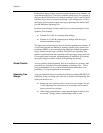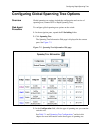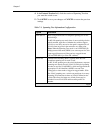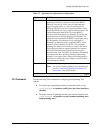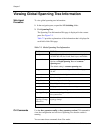
Document No. 10-300077, Issue 2 7-3
Configuring Rapid Spanning Tree
How RSTP Achieves Rapid Recovery
Port Roles In addition to port states, RSTP assigns and maintains port roles for all ports
in a Spanning Tree domain. One of five possible roles can be assigned to a
port: root, designated, alternate, backup, and disabled.
Root and designated ports are the only ports that actively participate in the
spanning tree (by forwarding frames). Alternate and backup ports are
blocked, but if a failure occurs in the network, they will will rapidly change
to root or designated if necessary.
Alternate and backup ports are essential to RSTP’s rapid recovery from port
failures. An alternate or backup port can forward traffic immediately. If a
port fails in an STP network, however, a 30-second loss of traffic occurs
while STP recalculates the Spanning Tree topology.
Root ports provide the lowest cost path to the root bridge. Each bridge in the
Spanning Tree domain has a root port that forwards frames to the root
bridge. The root bridge does not have a root port.
Designated ports provide the lowest cost path from a network segment to
the root bridge. Each network segment has one designated switch on which
one port is designated. All traffic sent to and from the network segment
passes through the designated port.
Alternate ports provide an alternate path in the direction of the root bridge.
If the root port on the bridge fails, one of the alternate ports quickly changes
to forwarding state.
Backup ports provide a backup path in the direction of the leaves of the
spanning tree. If a designated port on a LAN segment fails, then one of the
backup ports on that LAN segment quickly assumes the role of designated
port for the segment.
Because RSTP maintains this information, it is able to more quickly
activate a redundant path.
Rapid Transition
to Forwarding
Two new RSTP port settings, Edge Port and Point to Point Link, make
rapid transition to the forwarding state possible. A point-to-point link is
connected to exactly one other bridge (normally with a direct cable between
them). An edge port is not connected any other bridge.
Edge ports and ports that are connected to point-to-point links can change
from discarding directly to forwarding.



